Sorted by date Results 51 - 75 of 132
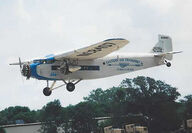
"Hey, aren't you the dude who announces up at Anoka?" He wore three Canon cameras, all with long expensive telephoto lenses, a sleeveless T-shirt, baggy cargo shorts, and sandals. His nose and forehead were seriously sunburned, as were the backs of his calves. "I have, yes," I replied and tried not to let the chocolate covered Dove ice cream bar drip on my shoes. "I thought I recognized the beard," he nodded. "You announcing here?" "Oh, no. Not here." "Have you ever announced here?" "Well,... Full story
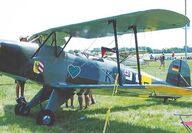
Carl Bucker, a World War I German naval aviator, founded Svenska Aero in 1921. He returned to Germany along with Swedish designer Anders Andersson in 1932. Established at Berlin-Johannisthal, Bucker produced a series of fine aerobatic and training aircraft, including the Jungmann, Jungmeister, and Bestmann, many of which served with the Luftwaffe and were manufactured under license in other countries. The prototype Bu-131 was first flown on 27 April 1934 by Joachim von Koppen. Early models were... Full story
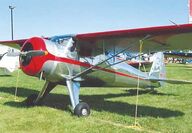
Donald Luscombe (1895-1965) served in France in WWI as an ambulance driver. It was in France that he took his first flight, in a Voisin pusher. After the Great War, he bought a Curtiss Jenny. His interest in developing enclosed cabin aircraft evolved from flying in the Jenny's exposed cockpit. The Monocoupe of 1927 came from his experiences. This was followed by the 145 hp Luscombe Phantom in 1933, the first all-metal light plane. Many readers will know or have flown the Luscombe 8 Silvaire and... Full story
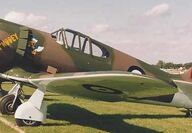
Formed in October 1936, with a new factory at Fishermen's Bend, in Melbourne, Australia, Commonwealth Aircraft Corporation (CAC) gave Australia a much needed national facility for aircraft manufacture. With Wing Commander Lawrence Wackett as chief designer, CAC began manufacture of trainers for the RAAF. Its first major product was a modified version of the North American NA-16, called the Wirraway, of which 755 were built. With access to modern fighter aircraft from Britain or the United States... Full story
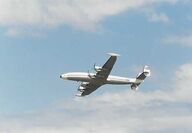
Continuing an ongoing series by Tom Lymburn. Some aircraft look right in the air. Nothing compares to the graceful elliptical wing of R.J. Mitchell's classic Merlin engine Spitfire, Kelly Johnson's elegant Lockheed P-38 Lightning, or North American's purposeful and efficient P-51 Mustang. When it comes to airliners, the Lockheed Constellation and later Super Constellation are in a category all their own. I announced the CAF Ghost Squadron shows at historic Hollman Field and Fleming Field from... Full story
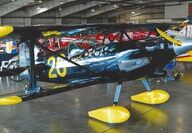
The original Mong Sport flew on May 1, 1953, the creation of Ralph Mong, Jr. Designed around a 65 hp Continental A65, it soon became a popular plans-built airplane, with a maximum speed of 115 mph and a stall of 50 mph. Light weight, at 970 pounds gross, including a 16-gallon fuel tank, its clean airframe appealed to the pilots when the biplane class was added at Reno in the mid-1960's, as the airframe proved adaptable to more powerful engines. In 1965 Bill Boland won the biplane class at 148 mp... Full story
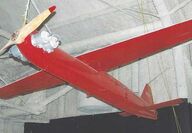
Actor Reginald Denny (1891-1967) flew with the Royal Flying Corps during World War I, first as a gunner on Bristol Fighters, later as a pilot. After the Great War he came to Hollywood to further his acting career appearing in over 200 silent films and "talkies." He also continued flying, becoming a member of the "13 Black Cats" stunt pilots which included Art Goebel. Denny's interest in radio-controlled model planes led to the founding of a hobby shop and the Radioplane Company that produced... Full story
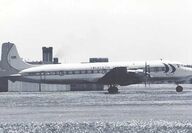
It was a very wet Saturday morning and more heavy rain was forecast. It had been a year for it. Discover Aviation Days had been rained out and Red Wing's weather was less than polite. The motel window needed cleaning, the shower curtain had mold around its hem and the air conditioner rattled faintly. The restaurant across the half-filled motel parking lot was dark. Only some lightning and the melancholy rotating RST beacon visible in the east lit up the early morning. I've been rained on as a... Full story
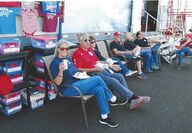
Sawbones has had a very successful Reno run without any major mechanical problems. Not this year. On a routine flight to burn off the 100LL so the tanks could be filled with racing fuel, the canopy departed the airframe. Commander Curt Brown, drawing on his 20 plus years of air racing experience and training as an Air Force test pilot, navigated the wounded Sea Fury back to the runway. Since Sawbones was forced to stand down for the week, the focus for the crew and my annual Flyer article had... Full story
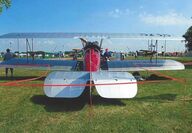
Formed in 1922 in Lincoln, Nebraska, by Ray Page, the Nebraska Aircraft Corporation became Lincoln-Page Aircraft in 1927. Lincoln began by rebuilding surplus Standard J-1 biplane trainers into a more useful and powerful model called the Lincoln Standard. Powered by a variety of engines, including the OX-5 and the 150 hp Hisso, these modifications were popular in the early 1920's. The Lincoln-Page LP-3 was certified in March 1928 under Approved Type Certificate #28 with a 90 hp Curtiss OX-5. A... Full story
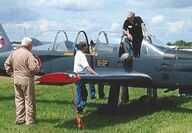
Societe de Construction d’Avions de Tourisme et d’Affaires was established in 1966 as a subsidiary of Sud-Aviation, later Aerospatiale. It has produced general aviation aircraft like the Horizon, Tampico, Tobago, Trinidad, and the TBM 700. In 1978, it began work on a basic trainer for the Armee de l’Air. Powered by a 300 hp Lycoming O-540 air-cooled flat 6, the Epsilon was designed to provide a stepping stone to the Dassault/Dornier Alpha Jet advanced trainer and light attack aircraft. The T... Full story
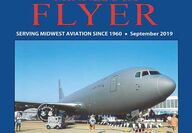
The Air Force's new Boeing KC-46A Pegasus air-to-air refueling tanker graced the main ramp. Set to replace or supplement the old KC-135 and KC-10, it's based on the 767 airliner.... Full story
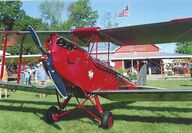
"Mud, mud, glorious mud – Nothing quite like it for cooling the blood..." From "The Hippopotamus Song" by Michael Flanders and Donald Swan More like curdling or boiling the blood. 2019 seemed a reprise of Sloshkosh and the Splash-In from earlier days. Due to heavy rains before the convention, parking autos, RVs, and airplanes proved a challenge and walk times to the gates for the notorious bag check seemed like infinity. In 35 years, I've never parked so far away. Packs of seagulls circled a... Full story

Glenn Curtiss (1878-1930) was truly one of aviation's great pioneers. He founded the Curtiss Aeroplane Company on 1 December 1910 in Hammondsport, NY. The company evolved through various mergers until 8 August 1929, when it combined with former bitter rival Wright to become Curtiss-Wright. Litigation between Curtiss and the Wrights had lasted from 1908 to 1913. In 1930, Curtiss-Wright absorbed Wichita based Travel Air. Curtiss-Wright did not survive long after WWII as an aircraft manufacturer,... Full story
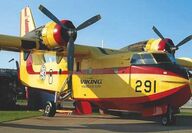
Established by the Canadian government in 1944 at Montreal to build a Merlin engined version of the DC-4/C-54, Canadair manufactured its own designs (Argus and Tutor) and license - built F-86 Sabres, Lockheed T-33s, Lockheed F-104s, and the Northrop F-5. In 1986, the company was sold to Bombardier. Canadair's unique amphibious CL-215 fire bomber, powered by two 2100 hp Pratt & Whitney R-2800 radials, was first flown on 23 October 1967 by W. Longhurst and made its first water takeoff on 1 May... Full story
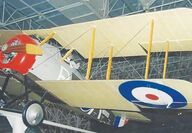
Thomas Octave Murdock Sopwith (1888-1989), later Sir Thomas, formed Sopwith Aviation at Kingston-on-Thames in 1912. Famous as a pilot, balloonist, car racer, and yacht racer, Sopwith, with Fred Sigrist and Harry Hawker, were the backbone of a company that supplied the RFC, RNAS, and RAF with combat aircraft during WWI. Finances forced the liquidation of Sopwith after the war, but it returned to aircraft manufacturing as H. G. Hawker Engineering in November 1920. Known for the 1 ½... Full story
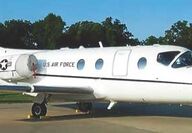
To cover its needs for liaison, medevac, training, and light cargo, the USAF has acquired "off the shelf" civilian business aircraft. Examples have included the Beech King Air, Cessna Citation, Gates Learjet, Gulfstream, Lockheed Jetstar, and North American Sabreliner. To train students for tanker and airlift operations, the Air Force ordered a converted version of the Beechjet 400A. The T-1A began life as the eight passenger Mitsubishi MU-300 Diamond, first flying on 29 August 1978. After... Full story
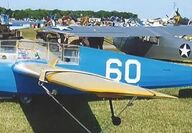
The Army was impressed by the Luftwaffe's use DFS 230 assault gliders on 10 May 1940, in the surprise capture of Belgium's Fort Eben-Emael and a bridge over the Albert Canal. As a result, it ordered the Frankfort TG-1, Schweizer TG-2 and TG-3, and the Laister-Kauffmann TG-4 training gliders in April 1941. While these civilian designs were suitable for training, they did not replicate the flight characteristics of the large WACO CG-4A combat gliders. The surviving trainers were declared surplus b... Full story
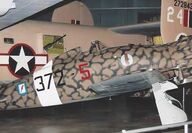
Founded in 1912 by Guilio Macchi to manufacture Nieuport aircraft, Macchi soon turned to building seaplanes designed by Mario Castoldi. The most famous were the Schneider Trophy racers, culminating in the MC.72 which still holds the piston-engined speed record for seaplanes. On 23 October 1934, Francesco Agello hit 440.681 mph behind the 3100 hp Fiat 24 cylinder liquid-cooled engine. First flying on 24 December 1937, the MC.200 fighter won the Regia Aeronautica interceptor contest of 1938.... Full story
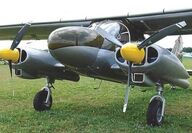
Professor Claude Dornier was known during World War I for his work with stressed skin Duralumin construction, designing large flying boats and other combat aircraft, including the experimental D-1 all metal single-seat fighter. Post-war he continued designs of all metal flying boats like the famous "Wal" series, production taking place in Italy, Spain, Switzerland, Sweden, and Japan to avoid the Versailles Treaty and Allied Control Commission. During World War II, Dornier production focused on t... Full story
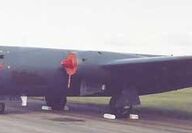
Designed by Teddy Petter, and first flown by Wing Commander Roland Beamont on 13 May 1949, the Rolls Royce Avon powered Canberra was the RAF's first jet bomber. Produced in the U.K. by English Electric, Avro, Handley Page, and Shorts and, like A84-229 in this Oshkosh 1991 photo, by the Australian Government Aircraft Factory at Fishermen's Bend, the Canberra and its American Wright J-65 engined Martin B-57 cousin, remained in military service until the last RAF PR. 9 was retired in July 2006.... Full story
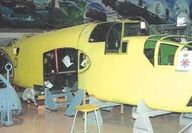
The Bolingbroke was a Canadian license production Bristol Blenheim. In an effort to build Canadian aircraft manufacturing capability, the RCAF chose the Bristol Model 149 for production by Fairchild Aircraft of Longueuil, Quebec. The initial contract was awarded in November 1937, and the first aircraft, RCAF 702, made its maiden flight on 14 September 1939, flown by J. H. "Red" Lymburner. Powered by two Bristol Mercury nine-cylinder radials and carrying a 1000 pound bomb load, the Bolingbroke... Full story
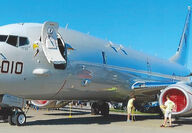
Maritime patrol aircraft evolved during WWI with Curtiss and Felixstowe flying boats scouring the North Sea and Mediterranean for German U-boats and commerce raiders. Land based bombers followed. The Catalina, Sunderland, Wellington, and Liberator served during WWII. World War II also saw the modification of airliners into land-based patrol aircraft. The Lockheed Model 14 Electra became the Model 414 Hudson and the Focke-Wulf FW-200 Condor became Churchill's "scourge of the Atlantic." Post war,... Full story

Emil Matthew "Matty" Laird (1896-1982) flew his first design on 15 September 1913. Built in his mother's attic, it got 10 feet into the air. Associated with Wichita and Chicago, Laird was famed for his custom-built sport and racing aircraft. Known initially for the Swallow biplane (about 43 built between 1920 and 1923), in 1924 he began design and manufacture of a series of Laird Commercials that sold well to "sportsman" pilots even during the Depression. Laird biplanes were part of the early da... Full story

The dusty black Nissan rests by the "4C" pillar. I ditch the empty water bottles and other trash in a nearby can and settle in for the drive to Stead. We're staying at the Peppermill, a nice hotel and casino where inside it's never day or night. It clanks, whistles, clinks, shouts, and buzzes without pause, the search for the elusive jackpot an addictive lure. To me, it's a place to eat, sleep, and write. I'm not used to a pushbutton start or an automatic transmission. Old guy that I am, all my... Full story